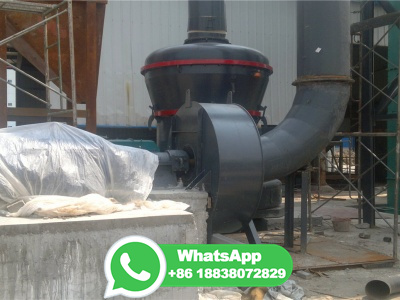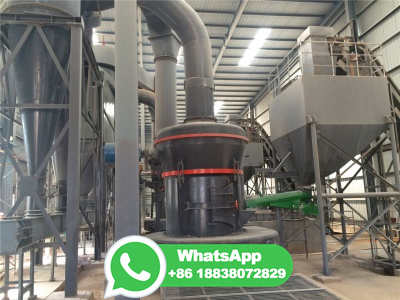
When coal burns, it releases carbon dioxide and other emissions in flue gas, the billowing clouds you see pouring out of smokestacks. Some clean coal technologies purify the coal before it burns. One type of coal preparation, coal washing, removes unwanted minerals by mixing crushed coal with a liquid and allowing the impurities to separate and ...
WhatsApp: +86 18037808511
The term "fossil fuel" applies to organic material deposits that can burn, thus producing energy. One such fuel is coal, which is the solid altered remains of plant material, while oil and gas are the liquid and gaseous remains of various organic or inorganic sources. Standard thinking requires long ages for their origin. For decades it has been taught that dead plants accumulate in the ...
WhatsApp: +86 18037808511
Coal is a combustible black or brownishblack sedimentary rock with a high amount of carbon and hydrocarbons. Coal is classified as a nonrenewable energy source because it takes millions of years to form. Coal contains the energy stored by plants that lived hundreds of millions of years ago in swampy forests. Layers of dirt and rock covered the ...
WhatsApp: +86 18037808511
With more heat, time, and pressure, the kerogen underwent a process called catagenesis, and transformed into hydrocarbons. Hydrocarbons are simply chemicals made up of hydrogen and carbon. Different combinations of heat and pressure can create different forms of hydrocarbons. Some other examples are coal, peat, and natural gas.
WhatsApp: +86 18037808511
lignite? Coal formed millions of years ago when the earth was covered with huge swampy forests where plants giant ferns, reeds and mosses grew. As the plants grew, some died and fell into the swamp waters. New plants grew up to take their places and when these died still more grew.
WhatsApp: +86 18037808511
The uses of fractional distillation are that it enables component separation into different phases and purification of organic compounds. In coal and petroleum class 8 notes, the classification of natural resources, the formation of petroleum and coal and the refining of petroleum along with class 8 Science chapter 5 MCQs are discussed.
WhatsApp: +86 18037808511
As more soil got deposited over them, they were compressed. The temperature also rose as they sank deeper and deeper. Under high pressure and high temperature, dead plants got slowly converted to coal. As coal contains mainly carbon, the slow process of conversion of dead vegetation into coal is called carbonization.
WhatsApp: +86 18037808511
Coal is a nonclastic sedimentary rock. They are the fossilized remains of plants and are in flammable black and brownishblack tones. Its main element is carbon, but it can also contain different elements such as hydrogen, sulfur and oxygen. Unlike coal minerals, it does not have a fixed chemical composition and crystal structure.
WhatsApp: +86 18037808511
Chemistry Coal and Petroleum Formation Of Fossil Fuels Formation of Coal How is Coal Formed? Coal is fossil fuel or fuel that comes from the remains of prehistoric plants or animals. The formation of coal occurs over millions of years via a process known as carbonation.
WhatsApp: +86 18037808511
The slow process by which the dead plants buried deep under the earth have become coal is called coal was formed from remains of plants therefore coal is called a fossil fuel. When heated in air,coal burns and produce,mainly carbon dioxide lot of heat energy is also produced during the burning of coal.
WhatsApp: +86 18037808511
Formation of coal. According to the current state of knowledge, coal is produced in nature by the socalled "carbonization" of plant parts. The biological material is initially transformed into peat in the absence of air by squeezing of pore water and biochemical processes and with further progression transformed by a diagenetic process ...
WhatsApp: +86 18037808511
Learn About Formation Of Fossil Fuels (Coal and Petroleum) Fossil fuels are nonrenewable resources used to create energy. They are available in coal, oil, and natural gas. Fossil fuels are obtained from the remains of plants and animals. The process of formation of fossil fuels involves the burial of dead organisms under sedimentary rocks.
WhatsApp: +86 18037808511
Coal is a combustible rock mainly composed of carbon along with variable quantities of other elements, mostly hydrogen, sulphur, oxygen and nitrogen. Coal occurs as layers, called coal beds or coal seams, that are found between other sedimentary rocks. Coal is slightly denser than water but less dense than most of the rocks of the Earth's crust ...
WhatsApp: +86 18037808511
Question 8: Explain the process of formation of petroleum. Answer: Petroleum is formed by the burial of aquatic plants and animals below the sea bed. The marine animals and plants died thousands of years ago and settled down in the bottom of the sea. In anaerobic conditions, microorganisms decompose this organic matter.
WhatsApp: +86 18037808511
Charcoal. Wood pile before covering with turf or soil, and firing it ( c. 1890) Charcoal is a lightweight black carbon residue produced by strongly heating wood (or other animal and plant materials) in minimal oxygen to remove all water and volatile constituents. In the traditional version of this pyrolysis process, called charcoal burning ...
WhatsApp: +86 18037808511
Solution. Fossil fuels are formed by decomposing dead and decaying plant or animal matter underground for millions of years. When any plant or animal dies, soil bacteria start decomposing the matter which was gradually buried by the layers of rock in the earth's crust which increases the heat and pressure inside, and as a result of heat, fossil ...
WhatsApp: +86 18037808511
Coal to Liquids Technology. Coal to Liquids (CTL) technology is a pioneering process that holds the potential to revolutionize the way we access and utilize energy resources. By converting coal, a vast and abundant fossil fuel, into liquid fuels such as diesel and gasoline, CTL offers a promising alternative to conventional petroleum sources.
WhatsApp: +86 18037808511
Carbon dioxide is a chemical compound with the chemical formula CO is made up of molecules that each have one carbon atom covalently double bonded to two oxygen atoms. It is found in the gas state at room temperature, and as the source of available carbon in the carbon cycle, atmospheric CO 2 is the primary carbon source for life on Earth. In the air, carbon dioxide is transparent to ...
WhatsApp: +86 18037808511
Although peat is used as a source of energy, it is not usually considered a is the precursor material from which coals are derived, and the process by which peat is formed is studied in existing swamps in many parts of the world (, in the Okefenokee Swamp of Georgia,, and along the southwestern coast of New Guinea).The formation of peat is controlled by several factors ...
WhatsApp: +86 18037808511
How is coal formed? BBC Science Focus Magazine It takes millions of years to create and as a nonrenewable resource, there is only a finite amount.
WhatsApp: +86 18037808511
Coal rank is a measure of coal maturity and is the most fundamental concept that relates both to the coalification history and utilization potential of a coal. Fig. shows the change in chemical and physical properties with rank from bituminous to anthracite coals ( Teichmuller Teichmuller, 1975 ).
WhatsApp: +86 18037808511
The process of coal formation is called carbonisation. The dead plants and vegetation due to temperature and high pressure over hundreds of years slowly turned into coal. ... Q. Explain the process of formation of petroleum. Ans. Petroleum is a natural resource and was formed from organisms present in the sea. The bodies of these organisms set ...
WhatsApp: +86 18037808511
Explain the process of formation of coal in nature. Expanded Universal Science > Chapter 5 Coal and Petroleum > ASSESSMENT ZONE > Q F. EASY. 8th CBSE. IMPORTANT. Earn 100.
WhatsApp: +86 18037808511
The coal formation process involves the burial of peat, which is made of partly decayed plant materials, deep underground. The heat and pressure of burial alters the texture and increases the carbon content of the peat, which transforms it into coal, a type of sedimentary rock. This process takes millions of years. Types, or "ranks," of coal are determined by carbon content. There are four ...
WhatsApp: +86 18037808511
Solution. Coal and petroleum have been formed from remains of dead animals and plants which has been subjected to various biological and geological process. Coal is the remains of trees, ferns and other plants that lived millions of years ago. These were crushed under the earth by earthquakes or volcanic eruptions.
WhatsApp: +86 18037808511
Diagenesis is a process of compaction under mild conditions of temperature and pressure. When organic aquatic sediments (proteins, lipids, carbohydrates) are deposited, they are very saturated with water and rich in minerals. ... This behavior is contrary to what is associated with coal formation. In the case of terrestrial burial, the organic ...
WhatsApp: +86 18037808511
Carbon monoxide (chemical formula CO) is a poisonous, flammable gas that is colorless, odorless, tasteless, and slightly less dense than monoxide consists of one carbon atom and one oxygen atom connected by a triple is the simplest carbon coordination complexes, the carbon monoxide ligand is called is a key ingredient in many processes in industrial ...
WhatsApp: +86 18037808511